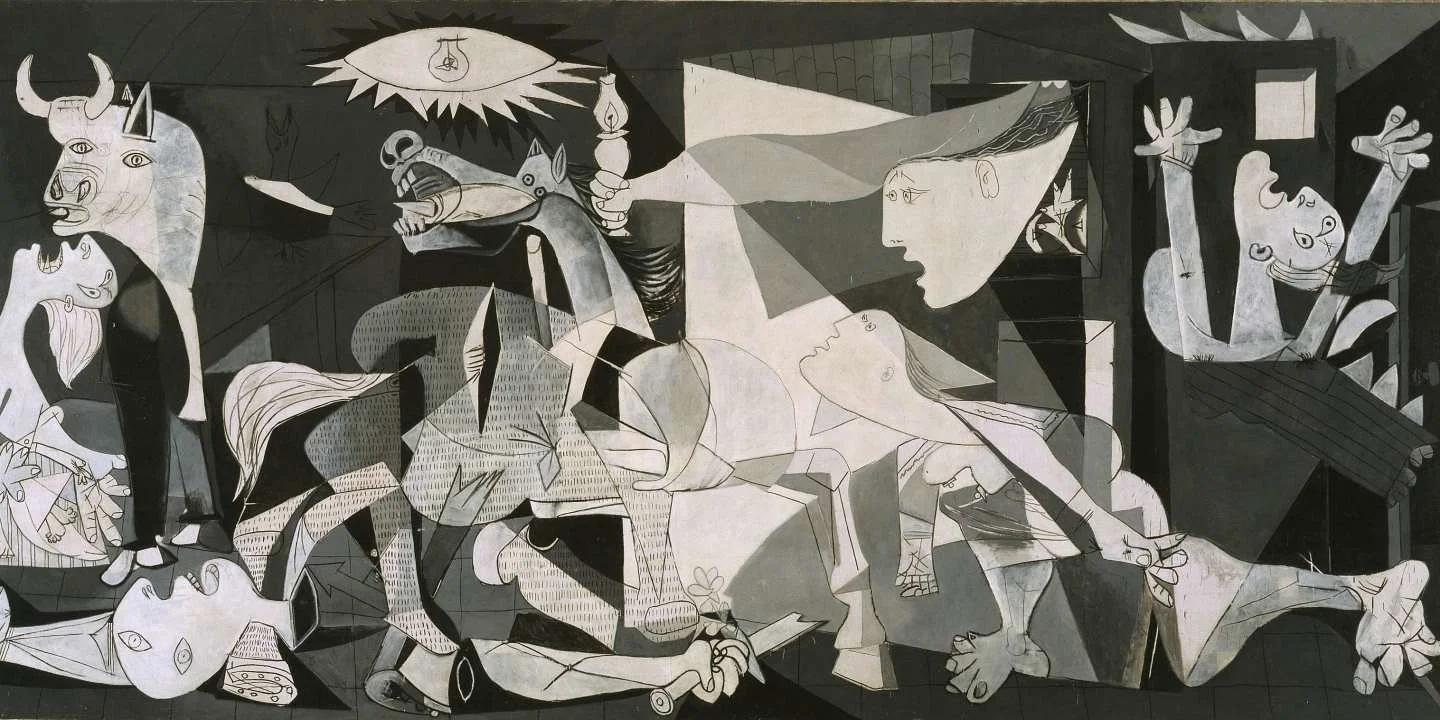A suite for 10 string guitar composed in the early 1960s. This multi-layered, fiercely unique contemporary work, converses with the tradition of Flamenco music, ancient myths, the art of Goya, the music of Debussy, the poetry of Federico García Lorca. It speaks of the political woes of Spain under the Franco regime, but mostly, voices the plight of Humanity as we are: a small part of Nature, possessed by its elements. In its 30 minutes, Si le Jour Paraît plunges us in a haunting, energetic journey through immemorial time.
Maurice Ohana: Si le Jour Paraît…
Scroll down to explore its 7 movements
I. Temple
A word that describes a sacred place or worship, or part of the process of ironmaking, it is also the vocalisation that Flamenco singers use to “tune” their voice. “Temple” opens the door and plunges us headfirst into Ohana’s sound world.
IV. 20 Avril (Planh)
Planh, from the Occitan dialect, or “Plainte” in French, this piece is a cry in grief and anger. The date, April 20th, refers to the assassination of Juan Grimeau by Franco’s regime. The event greatly impacted Ohana. Planh is te central movement of this work as well as first one that was written. The composer refers to it as the “Sun” in this 7 planet constellation.
II. Enueg
From the dialect in the Occitan region, “Enueg” translates to the French “Ennui”. The poetic term describes a type of nostalgic boredom. Here, with its open chords and forceful sounds, Enueg is a violent curse of darkness.
V. La Chevelure de Bérénice
Hear the expansive sounds of the cosmos in this movement, inspired by the mythology of Coma Berenice constellation (in French, “Bérénice’s Hair” ). A tale of love, sacrifice and loss under the indifferent gaze of the stars.
III. Maya (Marsyas)
Inspired by a mythological legend, when Marsyas claimed he could defeat Apollo with in a musical duel and, with his flute, put everyone into a frenzy. When it was Apollo's turn to play, he played his lyre so beautifully that people stood still with tears in their eyes. Apollo won. As punishment, Marsya was flayed alive.
VI. Jeu des Quatre Vents
Le second to last movement of the piece brings us a is a frenzied dance, as we are caught between and trasported into the “game of four winds”, posessed by the demonic spirit of art and music - that which Flamenco artists refer to as duende.
VII. Aube
In French, aube means dawn. This closing movement of Si le Jour Paraît (which literally translates to “If the day breaks”), is a piece that symbolizes the hope of a new day, and the end of the listener’s journey through immemorial time.
Si le Jour Paraît…
This 7-movement piece takes its name from Goya ‘s etching “Si Amanece; nos Vamos” (“If the day breaks; we depart”) (1797-1798). Who are this collective “we” planning their possible departure? Goya hints at the answer in his etching, depicting monstrous demons of darkness. They shall indeed leave, but only if the day breaks and light can surface.
In Ohana’s piece, the importance of the demons’ departure takes second place to the uncertainty of the day breaking, and the mystery of what dawn may bring, if it does indeed shine through.
My Journey with Ohana’s Music
I have spent the last three years researching the music, the traditions, and the stories behind Ohana’s works to bring forth a faithful contemporary rendition of his music for 10-string guitar- an instrument which he invented in its modern form.
Ohana’s sound world is multi layered, incorporating elements from Flamenco tradition, African, and French 20th century music, especially the influence of Debussy, whom he considered to be his “musical father”.
Ohana is a fiercely unique composer of our times, with an imposing oeuvre for piano, guitar, and orchestra. Yet , outside of France (where he lived for most of his adult life), he is still less known, in part because he did not subscribe to any of the musical movements of the post-war.









